In recent years, photovoltaic power generation technology has advanced by leaps and bounds, and installed capacity has increased rapidly. However, photovoltaic power generation has shortcomings such as intermittent and uncontrollable. Before it is dealt with, large-scale direct access to the power grid will bring great impact and affect the stable operation of the power grid. . Adding energy storage links can make photovoltaic power generation smoothly and stably output to the grid, and large-scale access to the grid will not affect the stability of the grid. And photovoltaic + energy storage, the system has a wider application range.
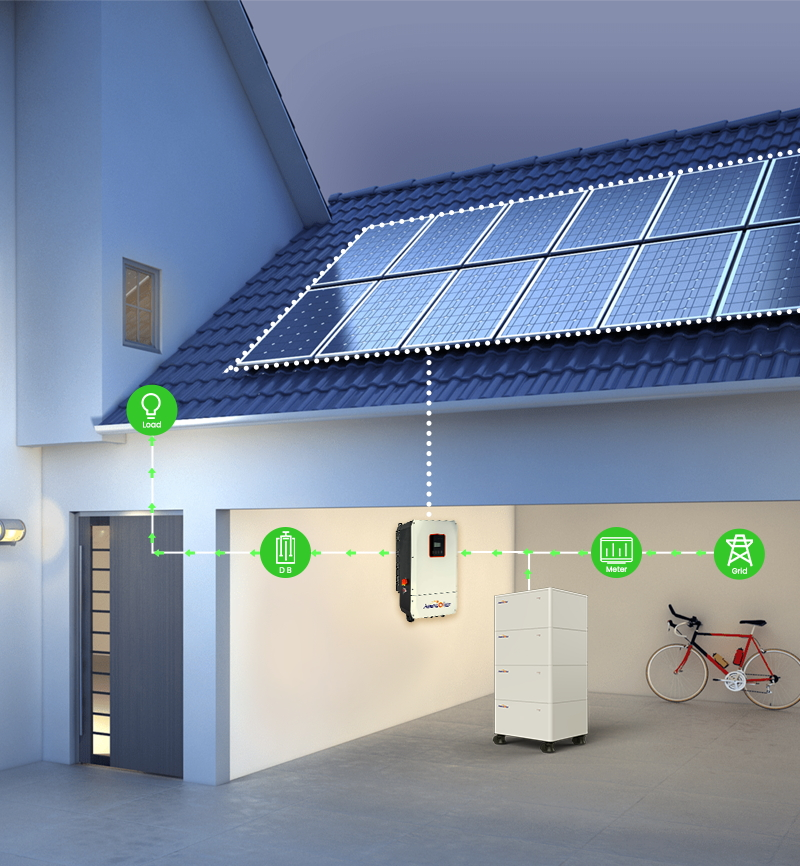
Photovoltaic storage system, including solar modules, controllers, inverters, batteries, loads and other equipment. At present, there are many technical routes, but the energy needs to be collected at a certain point. At present, there are mainly two topologies: DC coupling "DC Coupling" and AC coupling "AC Coupling".
1 DC coupled
As shown in the figure below, the DC power generated by the photovoltaic module is stored in the battery pack through the controller, and the grid can also charge the battery through the bidirectional DC-AC converter. The gathering point of energy is at the DC battery end.
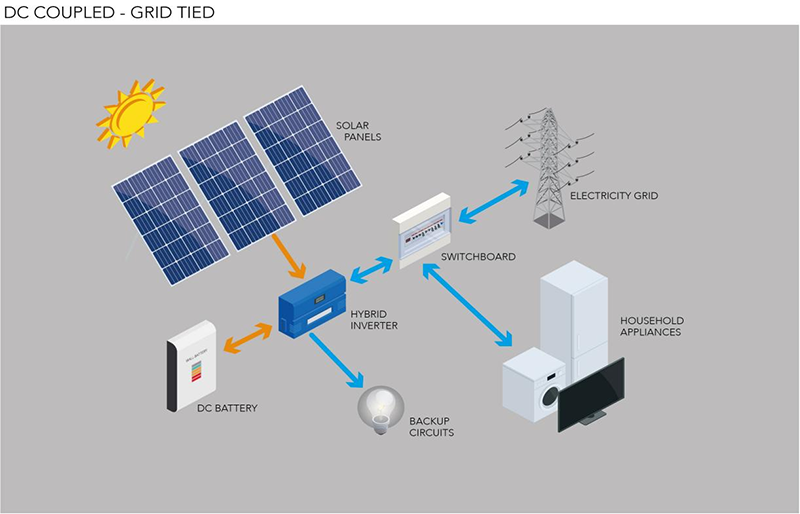
The working principle of DC coupling: when the photovoltaic system is running, the MPPT controller is used to charge the battery; when the electrical load is in demand, the battery will release the power, and the current is determined by the load. The energy storage system is connected to the grid. If the load is small and the battery is fully charged, the photovoltaic system can supply power to the grid. When the load power is greater than the PV power, the grid and PV can supply power to the load at the same time. Because photovoltaic power generation and load power consumption are not stable, it is necessary to rely on the battery to balance the energy of the system.
2 AC coupled
As shown in the figure below, the direct current generated by the photovoltaic module is converted into alternating current through the inverter, and is directly fed to the load or sent to the grid. The grid can also charge the battery through a bidirectional DC-AC bidirectional converter. The gathering point of energy is at the communication end.
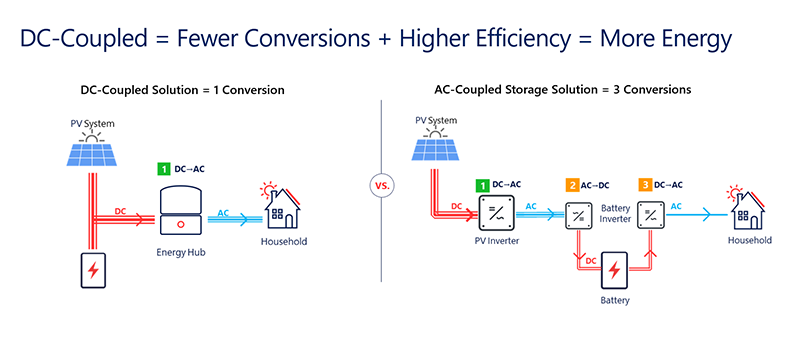
The working principle of AC coupling: it includes photovoltaic power supply system and battery power supply system. The photovoltaic system consists of photovoltaic arrays and grid-connected inverters; the battery system consists of battery packs and bidirectional inverters. These two systems can operate independently without interfering with each other, or they can be separated from the large power grid to form a micro-grid system.
Both DC coupling and AC coupling are currently mature solutions, each with its own advantages and disadvantages. According to different applications, choose the most suitable solution. The following is a comparison of the two solutions.
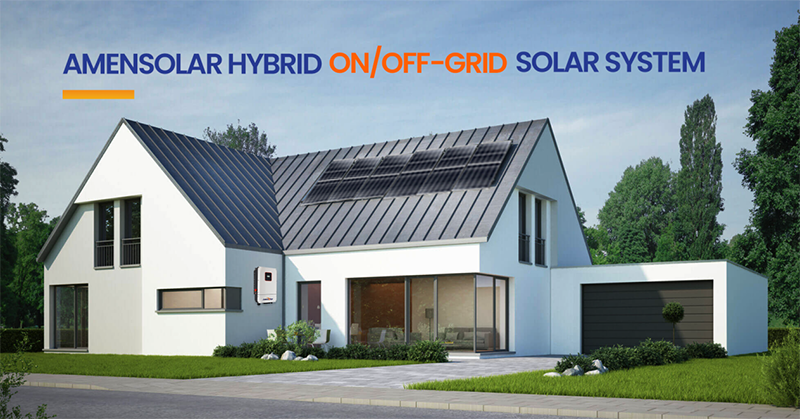
1 cost comparison
DC coupling includes controller, bidirectional inverter and transfer switch, AC coupling includes grid-connected inverter, bidirectional inverter and power distribution cabinet. From the perspective of cost, the controller is cheaper than the grid-connected inverter. The transfer switch is also cheaper than the power distribution cabinet. The DC coupling scheme can also be made into a control and inverter integrated machine, which can save equipment costs and installation costs. Therefore, the cost of the DC coupling scheme is a little lower than that of the AC coupling scheme.
2 Applicability comparison
DC coupling system, the controller, battery and inverter are connected in series, the connection is relatively close, but the flexibility is poor. In the AC coupling system, the grid-connected inverter, storage battery and bidirectional converter are parallel, the connection is not tight, and the flexibility is good. For example, in an already installed photovoltaic system, it is necessary to install an energy storage system, it is better to use AC coupling, as long as a battery and a bidirectional converter are installed, it will not affect the original photovoltaic system, and the energy storage system In principle, the design has no direct relationship with the photovoltaic system and can be determined according to the needs. If it is a newly installed off-grid system, photovoltaics, batteries, and inverters must be designed according to the user's load power and power consumption, and a DC coupling system is more suitable. However, the power of the DC coupling system is relatively small, generally below 500kW, and it is better to control the larger system with AC coupling.
3 efficiency comparison
From the perspective of photovoltaic utilization efficiency, the two schemes have their own characteristics. If the user loads more during the day and less at night, it is better to use AC coupling. The photovoltaic modules directly supply power to the load through the grid-connected inverter, and the efficiency can reach More than 96%. If the load of the user is relatively small during the day and more at night, and the photovoltaic power generation needs to be stored during the day and used at night, it is better to use DC coupling. The photovoltaic module stores electricity to the battery through the controller, and the efficiency can reach more than 95%. If it is AC coupling , Photovoltaics must first be converted into AC power through an inverter, and then converted into DC power through a bidirectional converter, and the efficiency will drop to about 90%.
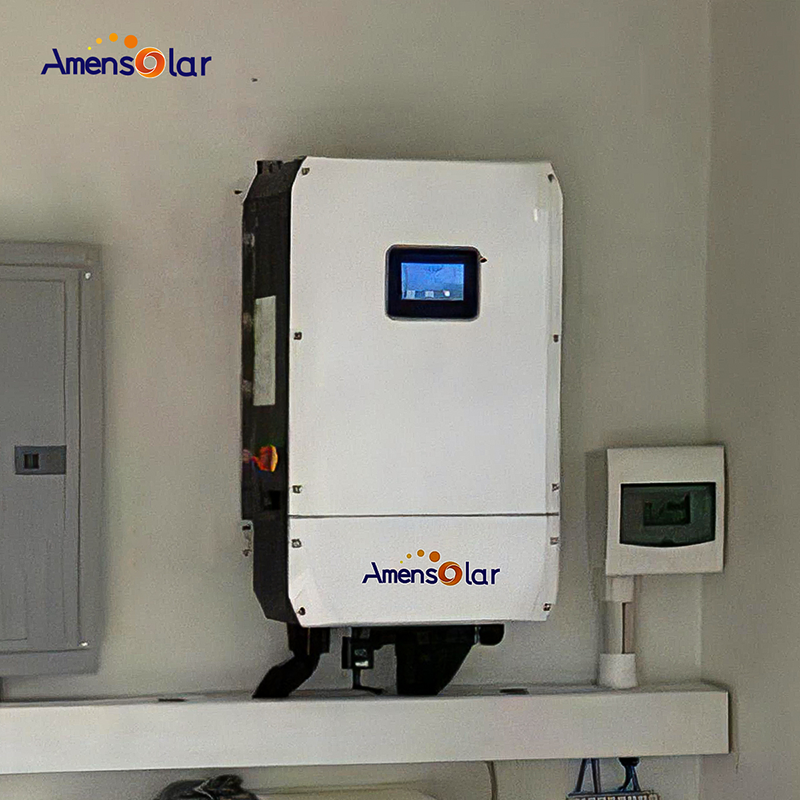
Amensolar's N3Hx series split phase inverters support AC coupling and are designed to enhance solar energy systems. We welcome more distributors to join us in promoting these innovative products. If you are interested in expanding your product offerings and providing high-quality inverters to your customers, we invite you to partner with us and benefit from the advanced technology and reliability of the N3Hx series. Contact us today to explore this exciting opportunity for collaboration and growth in the renewable energy industry.
Post time: Feb-15-2023








